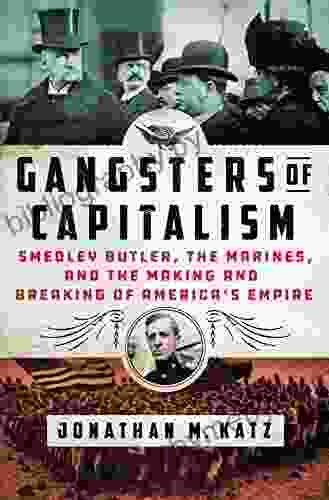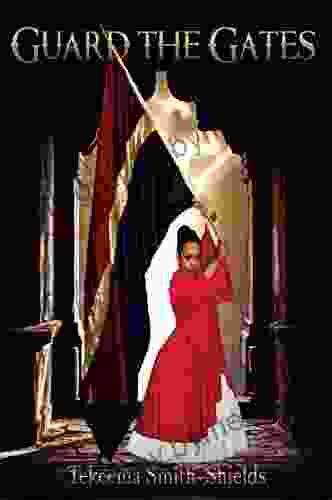The History of the Confederate War: Its Causes and Its Conduct

4.6 out of 5
| Language | : | English |
| File size | : | 3893 KB |
| Text-to-Speech | : | Enabled |
| Enhanced typesetting | : | Enabled |
| Word Wise | : | Enabled |
| Print length | : | 681 pages |
| Screen Reader | : | Supported |
The Confederate War, also known as the American Civil War, was a pivotal conflict in the history of the United States. Fought between 1861 and 1865, the war pitted the Union, composed of the northern and western states, against the Confederacy, formed by eleven southern states that had seceded from the Union.
The causes of the Confederate War were complex and multifaceted, including economic, political, and social factors. The issue of slavery was particularly divisive, with the Southern states seeking to preserve the institution of slavery, while the Northern states were increasingly opposed to it.
The conduct of the Confederate War was marked by intense fighting and heavy casualties. Both sides employed advanced weapons and tactics, including ironclad warships, repeating rifles, and trench warfare.
The Confederate War ended in 1865 with the surrender of the Confederate army under General Robert E. Lee. The Union victory preserved the Union and abolished slavery, but the war left a lasting legacy of division and bitterness.
Causes of the Confederate War
The causes of the Confederate War were complex and multifaceted, including economic, political, and social factors.
Economic factors
The economic development of the United States in the 19th century led to increased tensions between the North and the South. The North was becoming increasingly industrialized, while the South remained primarily agricultural.
The Southern economy was heavily dependent on slavery, which was used to produce cotton and other cash crops. The Northern economy, on the other hand, was more diversified and less reliant on slavery.
The growing economic disparity between the North and the South led to resentment and conflict. The Southern states felt that they were being exploited by the North, and they increasingly sought to protect their economic interests.
Political factors
The political landscape of the United States in the 19th century was also marked by growing tensions between the North and the South.
The election of Abraham Lincoln as president in 1860 was a major turning point. Lincoln was a strong opponent of slavery, and his election was seen by many Southerners as a threat to their way of life.
In response to Lincoln's election, seven Southern states seceded from the Union and formed the Confederate States of America. The Confederate states were led by Jefferson Davis, who became the president of the Confederacy.
Social factors
Social factors also played a role in the outbreak of the Confederate War. The issue of slavery was particularly divisive, with the Southern states seeking to preserve the institution of slavery, while the Northern states were increasingly opposed to it.
The Southern states argued that slavery was necessary for their economy and way of life. They also argued that slavery was a positive institution that benefited both slaves and slave owners.
The Northern states, on the other hand, condemned slavery as a moral evil. They argued that slavery was a violation of human rights and that it should be abolished.
Conduct of the Confederate War
The conduct of the Confederate War was marked by intense fighting and heavy casualties. Both sides employed advanced weapons and tactics, including ironclad warships, repeating rifles, and trench warfare.
Early battles
The first major battle of the Confederate War was the Battle of Fort Sumter in April 1861. The battle resulted in the surrender of the Union garrison at Fort Sumter, and it marked the beginning of the war.
In the early months of the war, the Confederate army won a number of victories, including the battles of Bull Run and Manassas. However, the Union army gradually gained the upper hand, and by the end of 1862, the Union had control of the Mississippi River and most of the major cities in the South.
Trench warfare
As the war progressed, both sides began to use trench warfare. Trench warfare involved digging a series of trenches and fortifications, and it was used to defend positions and protect troops from enemy fire.
Trench warfare led to a bloody stalemate in the war. Both sides suffered heavy casualties, and the war dragged on for years.
Ironclad warships
Ironclad warships were a new technology that was used in the Confederate War. Ironclad warships were covered in iron plates, which made them resistant to enemy fire.
The first ironclad warship was the CSS Virginia, which was built by the Confederate navy. The Virginia was a powerful warship, and it helped the Confederate navy to win a number of victories early in the war.
The Union navy also built ironclad warships, and the two sides fought a number of battles between ironclad warships.
Repeating rifles
Repeating rifles were another new technology that was used in the Confederate War.
4.6 out of 5
| Language | : | English |
| File size | : | 3893 KB |
| Text-to-Speech | : | Enabled |
| Enhanced typesetting | : | Enabled |
| Word Wise | : | Enabled |
| Print length | : | 681 pages |
| Screen Reader | : | Supported |
Do you want to contribute by writing guest posts on this blog?
Please contact us and send us a resume of previous articles that you have written.
 Book
Book Novel
Novel Page
Page Chapter
Chapter Text
Text Story
Story Genre
Genre Reader
Reader Library
Library Paperback
Paperback E-book
E-book Magazine
Magazine Newspaper
Newspaper Paragraph
Paragraph Sentence
Sentence Bookmark
Bookmark Shelf
Shelf Glossary
Glossary Bibliography
Bibliography Foreword
Foreword Preface
Preface Synopsis
Synopsis Annotation
Annotation Footnote
Footnote Manuscript
Manuscript Scroll
Scroll Codex
Codex Tome
Tome Bestseller
Bestseller Classics
Classics Library card
Library card Narrative
Narrative Biography
Biography Autobiography
Autobiography Memoir
Memoir Reference
Reference Encyclopedia
Encyclopedia Gary Troia
Gary Troia Deborah Underwood
Deborah Underwood Gayle Jessup White
Gayle Jessup White Gennaro Contaldo
Gennaro Contaldo James Morcan
James Morcan Heather Cox Richardson
Heather Cox Richardson Geronimo
Geronimo Tim Freke
Tim Freke George Noory
George Noory George Robertson
George Robertson Peter Davison
Peter Davison James Abbott Mcneill Whistler
James Abbott Mcneill Whistler Georgia Hunter
Georgia Hunter Lisa Hanawalt
Lisa Hanawalt Liz Moody
Liz Moody Hans Hendrik
Hans Hendrik Gail Goolsby
Gail Goolsby Hugo Vickers
Hugo Vickers Garrett Redfield
Garrett Redfield George Sayer
George Sayer
Light bulbAdvertise smarter! Our strategic ad space ensures maximum exposure. Reserve your spot today!

 Mario BenedettiZoo In My Luggage: A Captivating Journey Through the Whispering Land and...
Mario BenedettiZoo In My Luggage: A Captivating Journey Through the Whispering Land and...
 T.S. EliotElevate Performance with Precision: "Perfect Phrases for Setting Performance...
T.S. EliotElevate Performance with Precision: "Perfect Phrases for Setting Performance...
 Jayson PowellTales From The Bus Leagues: A Hilarious and Heartwarming Journey into the...
Jayson PowellTales From The Bus Leagues: A Hilarious and Heartwarming Journey into the... Randy HayesFollow ·5.6k
Randy HayesFollow ·5.6k Calvin FisherFollow ·17.2k
Calvin FisherFollow ·17.2k Rod WardFollow ·6.7k
Rod WardFollow ·6.7k John UpdikeFollow ·15.1k
John UpdikeFollow ·15.1k Dustin RichardsonFollow ·17.8k
Dustin RichardsonFollow ·17.8k Jules VerneFollow ·4.5k
Jules VerneFollow ·4.5k Jamie BlairFollow ·18.3k
Jamie BlairFollow ·18.3k Larry ReedFollow ·10.4k
Larry ReedFollow ·10.4k

 Brian West
Brian WestSmedley Butler: The Marines and the Making and Breaking...
: A Marine's...

 Gabriel Garcia Marquez
Gabriel Garcia MarquezIschia, Capri, Sorrento, Positano, And Amalfi: An...
Explore the...

 Felix Carter
Felix CarterAdorn Your Little Princess with Fleur Ange's Exquisite...
Welcome to the enchanting...

 Kelly Blair
Kelly BlairUnveiling the Secrets of the Historical Way and Fishermen...
Step into the pages...

 Angelo Ward
Angelo WardKnit the Cutest Thumbless Mittens for Your Little One:...
Prepare to be...
4.6 out of 5
| Language | : | English |
| File size | : | 3893 KB |
| Text-to-Speech | : | Enabled |
| Enhanced typesetting | : | Enabled |
| Word Wise | : | Enabled |
| Print length | : | 681 pages |
| Screen Reader | : | Supported |








